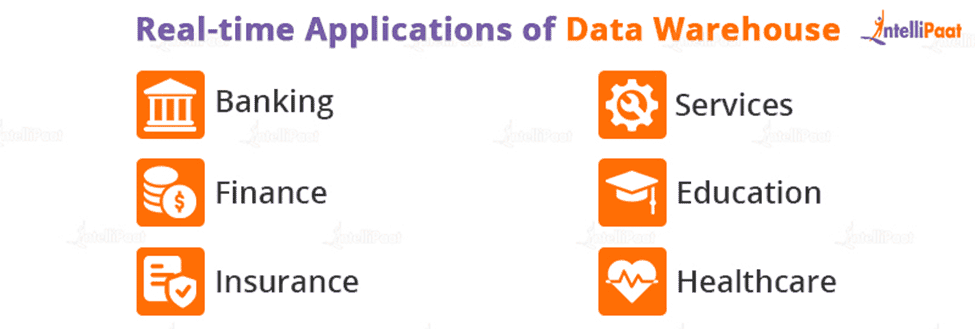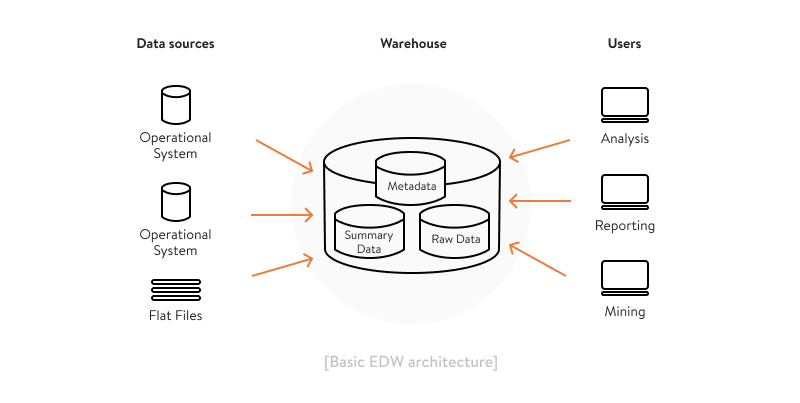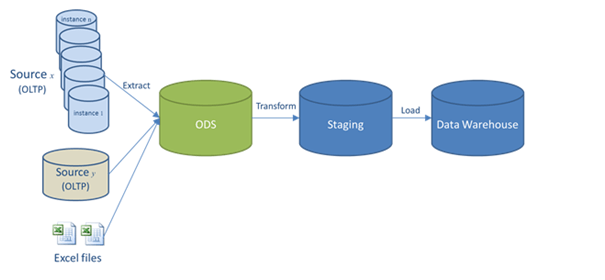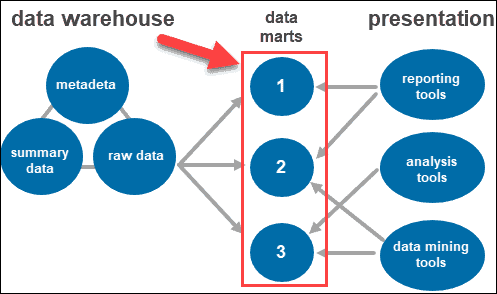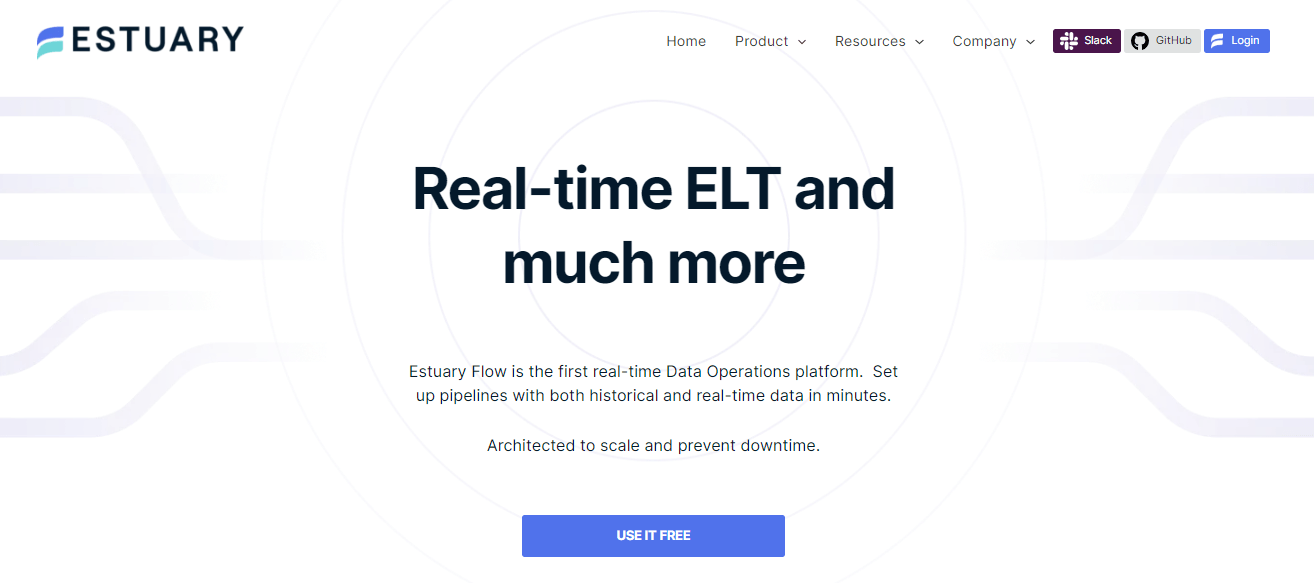
Gone are the days when organizations had to rely on stale, outdated data for their strategic planning and operational processes. Now, real-time data warehouses process and analyze data as it is generated, helping overcome the limitations of their traditional counterparts. The impact of real-time data warehousing is far-reaching. From eCommerce businesses to healthcare providers, real-time data warehouse examples and applications span various sectors.
The significance of real-time data warehousing becomes even more evident when we consider the sheer volume of data being generated today. The global data sphere is projected to reach a staggering 180 zettabytes by 2025.
With these numbers, it’s no wonder every company is looking for solutions like real-time data warehousing for managing their data efficiently. However, getting the concept of a real-time data warehouse, particularly when compared with a traditional data warehouse, can be quite intimidating, even for the best of us.
In this guide, with the help of a range of examples and real-life applications, we will explore how real-time data warehousing can help organizations across different sectors overcome the data overload challenge.
What Is A Real-Time Data Warehouse?
A Real-Time Data Warehouse (RTDW) is a modern tool for data processing that provides immediate access to the most recent data. RTDWs use real-time data pipelines to transport and collate data from multiple data sources to one central hub, eliminating the need for batch processing or outdated information.
Despite similarities with traditional data warehouses, RTDWs are capable of faster data ingestion and processing speeds. They can detect and rectify errors instantly before storing the data, providing consistent data for an effective decision-making process.
Real-Time Data Warehouse Vs Traditional Data Warehouse
Traditional data warehouses act as storage centers for accumulating an organization’s historical data from diverse sources. They combine this varied data into a unified view and provide comprehensive insights into the past activities of the organization. However, these insights are often outdated by the time they are put to use, as the data could be days, weeks, or even months old.
On the other hand, real-time data warehousing brings a significant enhancement to this model by continuously updating the data they house. This dynamic process provides a current snapshot of the organization’s activities at any given time, enabling immediate analysis and action.
Let’s look at some of the major differences between the two.
Complexity & Cost
RTDWs are more complex and costly to implement and maintain than traditional data warehouses. This is because they require more advanced technology and infrastructure to handle real-time data processing.
Decision-Making Relevance
Traditional data warehouses predominantly assist in long-term strategic planning. However, the real-time data updates in RTDWs make them suitable for both immediate, tactical decisions and long-term strategic planning.
Correlation To Business Results
Because of fresher data availability, RTDWs make it easier to connect data-driven insights with real business results and provide immediate feedback.
Operational Requirements
RTDWs demand constant data updates, a process that can be carried out without causing downtime in the data warehouse operations. Typically, traditional warehouses don't need this feature but it becomes crucial when dealing with data updates happening every week.
Data Update Frequency
While the lines between traditional data warehouses and real-time data warehouses are now blurred due to some data warehouses adopting streaming methods to load data, traditionally, the former updated their data in batches on a daily, weekly, or monthly schedule. As a result, the data some of these data warehouses hold may not reflect the most recent state of the business. In contrast, real-time data warehouses update their data almost immediately as new data arrives.
3 Major Types Of Data Warehouses
Let's take a closer look at different types of data warehouses and explore how they integrate real-time capabilities.
Enterprise Data Warehouse (EDW)
An Enterprise Data Warehouse (EDW) is a centralized repository that stores and manages large volumes of structured and sometimes unstructured data from various sources within an organization. It serves as a comprehensive and unified data source for business intelligence, analytics, and reporting purposes. The EDW consolidates data from multiple operational systems and transforms it into a consistent and standardized format.
The EDW is designed to handle and scale with large volumes of data. As the organization's data grows over time, the EDW can accommodate the increasing storage requirements and processing capabilities. It also acts as a hub for integrating data from diverse sources across the organization. It gathers information from operational systems, data warehouses, external sources, cloud-based platforms, and more.
Operational Data Store (ODS)
An Operational Data Store (ODS) is designed to support operational processes and provide real-time or near-real-time access to current and frequently changing data. The primary purpose of an ODS is to facilitate operational reporting, data integration, and maintain data consistency across different systems.
ODS collects data from various sources, like transactional databases and external feeds, and consolidates it in a more user-friendly and business-oriented format. It typically stores detailed and granular data that reflects the most current state of the operational environment.
Data Mart
A Data Mart is a specialized version of a data warehouse that is designed to meet the specific analytical and reporting needs of a particular business unit, like sales, marketing, finance, or human resources.
Data Marts provide a more targeted and simplified view of data. It contains a subset of data that is relevant to the specific business area, organized in a way that facilitates easy access and analysis.
Data Marts are created by extracting, transforming, and loading (ETL) data from the data warehouse or other data sources and structuring it to support analytical needs. They can include pre-calculated metrics, aggregated data, and specific dimensions or attributes that are relevant to the subject area.
11 Applications Of Real-Time Data Warehouses Across Different Sectors
The use of RTDWs is now common across many sectors. The rapid access to information they provide significantly improves the operations of many businesses, from online retail to healthcare.
Let’s take a look at some major sectors that benefit from these warehouses for getting up-to-the-minute data.
eCommerce
In the dynamic eCommerce industry, RTDWs facilitate immediate data processing that is used to get insights into customer behavior, purchase patterns, and website interactions. This enables marketers to deliver personalized content, targeted product recommendations, and swift customer service. Additionally, real-time inventory updates help maintain optimal stock levels, minimizing overstock or stock-out scenarios.
AI/ML
RTDWs empower AI/ML algorithms with new, up-to-date data. This ensures models make predictions and decisions based on the most current state of affairs. For instance, in automated trading systems, real-time data is critical for making split-second buying and selling decisions.
Manufacturing & Supply Chain
RTDWs support advanced manufacturing processes such as real-time inventory management, quality control, and predictive maintenance. It provides crucial support for business intelligence operations. You can make swift adjustments in production schedules based on instantaneous demand and supply data to optimize resource allocation and reduce downtime.
Healthcare
RTDWs in healthcare help improve care coordination. It provides instant access to patient records, laboratory results, and treatment plans, improving care coordination. They also support real-time monitoring of patient vitals and provide immediate responses to critical changes in patient conditions.
Banking & Finance
In banking and finance, RTDWs give you the latest updates on customer transactions, market fluctuations, and risk factors. This real-time financial data analysis helps with immediate fraud detection, instantaneous credit decisions, and real-time risk management.
Financial Auditing
RTDWs enable continuous auditing and monitoring to give auditors real-time visibility into financial transactions. It helps identify discrepancies and anomalies immediately to enhance the accuracy of audits and financial reports.
Emergency Services
RTDWs can keep track of critical data like the location of incidents, available resources, and emergency personnel status. This ensures an efficient deployment of resources and faster response times, potentially saving lives in critical situations.
Telecommunications
RTDWs play a vital role in enabling efficient network management and enhancing overall customer satisfaction. They provide immediate analysis of network performance, customer usage patterns, and potential system issues. This improves service quality, optimizes resource utilization, and proactive problem resolution.
Online Gaming
RTDWs provide analytics on player behaviors, game performance, and in-game purchases to support online gaming platforms. This enables game developers to promptly adjust game dynamics, improve player engagement, and optimize revenue generation.
Energy Management
In the energy sector, RTDWs provide instantaneous data on energy consumption, grid performance, and outage situations. This enables efficient energy distribution, quick responses to power outages, and optimized load balancing.
Cybersecurity
RTDWs are crucial for cybersecurity as they provide real-time monitoring of network activities and immediate detection of security threats. This supports swift countermeasures, minimizes damage, and enhances the overall security posture.
Real-Time Data Warehouse: 3 Real-Life Examples For Enhanced Business Analytics
To truly highlight the importance of real-time data warehouses, let’s explore some real-life case studies.
Case Study 1: Beyerdynamic
Beyerdynamic, an audio product manufacturer from Germany, was facing difficulties with its previous method of analyzing sales data. In this process, they extracted data from their legacy systems into a spreadsheet and then compiled reports, all manually. It was time-consuming and often caused inaccurate reports.
Solution
To overcome these challenges, Beyerdynamic developed a data warehouse that automatically extracted transactions from its existing ERP and financial accounting systems. This data warehouse was carefully designed to store standard information for each transaction, like product codes, country codes, customers, and regions.
They also implemented a web-based reporting solution that helped managers create their standard and ad-hoc reports based on the data held in the warehouse.
Benefits
Supported by an optimized data model, the new system allowed the company to perform detailed sales data analyses and identify trends in different products or markets.
- Production plans could be adjusted quickly based on changing demand, ensuring the company neither produced excessive inventory nor missed out on opportunities to capitalize on increased demand.
- With the new system, the company could use real-time data for performance measurement and appraisal. Managers compared actual sales with targets by region, assessed the success of promotions, and quickly responded to any adverse variances.
- Sales and distribution strategies could be quickly adapted according to changing demands in the market. For instance, when gaming headphone sales started increasing in Japan, the company promptly responded with tailored promotions and advertising campaigns.
Case Study 2: Continental Airlines
Continental Airlines is a major player in the aviation world. It faced significant issues because of old, manual systems. Their outdated approach slowed down decision-making and blocked easy access to useful data from departments like customer service, flight operations, and financials. Also, the lack of real-time data meant that decisions were often based on outdated information.
Solution
They devised a robust plan that hinged on 2 key changes: the ‘Go Forward’ strategy and a ‘real-time data warehouse’
- Go Forward Strategy: This initiative focused on tailoring the airline’s services according to the customer’s preferences. The concept was simple but powerful – understand what the customer wants and adapt services accordingly. In an industry where customer loyalty can swing on a single flight experience, this strategy aims to ensure satisfaction and foster brand loyalty.
- Real-Time Data Warehouse: In tandem with the new strategy, Continental also implemented an RTDW. This technological upgrade gave the airline quick access to current and historical data. The ability to extract insights from this data served as a vital reference point for strategic decision-making, optimizing operations, and enhancing customer experiences.
Benefits
The new strategy and technology led to critical improvements:
- The airline could offer a personalized touch by understanding and acting on customer preferences. This raised customer satisfaction and made the airline a preferred choice for many.
- The introduction of the RTDW brought simplicity and efficiency to the company’s operations. It facilitated quicker access to valuable data, which was instrumental in reducing the time spent managing various systems. This, in turn, resulted in significant cost savings and increased profitability.
Case Study 3: D Steel
D Steel, a prominent steel production company, was facing a unique set of challenges when they aimed to set up a real-time data warehouse to analyze their operations. While they tried to use their existing streams package for synchronization operations, several obstacles emerged.
The system was near real-time but it couldn't achieve complete real-time functionality. The load on the source server was significantly high and synchronization tasks required manual intervention.
More so, it lacked automation for Data Definition Language (DDL), compatibility with newer technologies, and had difficulties with data consistency verification, recovery, and maintenance. These challenges pushed the steel company to seek a new solution.
The Solution
D Steel decided to implement real-time data warehouse solutions that enabled instant data access and analysis.
Benefits
The new RTDWs system proved to be extremely successful as it resolved all previous problems. It provided:
- Real-time synchronization
- Implementing DDL automation
- Automated synchronization tasks
- Reduced the load on the source server
The system also introduced a unique function that compared current year data with that of the previous year and helped the company in annual comparison analysis.
Enhancing Real-Time Data Warehousing: The Role of Estuary Flow
Estuary’s Flow is our data operations platform that binds various systems by a central data pipeline. With Flow, you get diverse systems for storage and analysis, like databases and data warehouses. Flow is pivotal in maintaining synchronization amongst these systems, ensuring that new data feeds into them continuously.
Flow utilizes real-time data lakes as an integral part of its data pipeline. This serves dual roles.
First, it works as a transit route for data and facilitates an easy flow and swift redirection to distinct storage endpoints. This feature also helps in backfilling data from these storage points.
The secondary role of the data lake in Flow is to serve as a reliable storage backbone. You can lean on this backbone without the fear of turning into a chaotic ‘data swamp.’
Flow ensures automatic organization and management of the data lake. As data collections move through the pipeline, Flow applies different schemas to them as per the need.
Remember that the data lake in Flow doesn’t replace your ultimate storage solution. Instead, it aims to synchronize and enhance other storage systems crucial for powering key workflows, whether they're analytical or transactional.
Conclusion
As we have seen with real-time data warehouse examples, this solution transcends industry boundaries. Only those organizations that embrace real-time data warehousing to its fullest can unlock the true potential of their data assets.
While it can be a little tough to implement, the benefits of real-time data warehousing far outweigh the initial complexities, and the long-term advantages it offers are indispensable in today's data-driven world.
If you’re considering setting up a real-time data warehouse, investing in a top-notch real-time data ingestion pipeline like Estuary Flow should be your first step. Designed specifically for building real-time data management, Flow provides a no-code solution to synchronize your many data sources and integrate fresh data seamlessly. Signup for Estuary Flow for free and seize the opportunity today.

About the author
With over 15 years in data engineering, a seasoned expert in driving growth for early-stage data companies, focusing on strategies that attract customers and users. Extensive writing provides insights to help companies scale efficiently and effectively in an evolving data landscape.
Popular Articles





